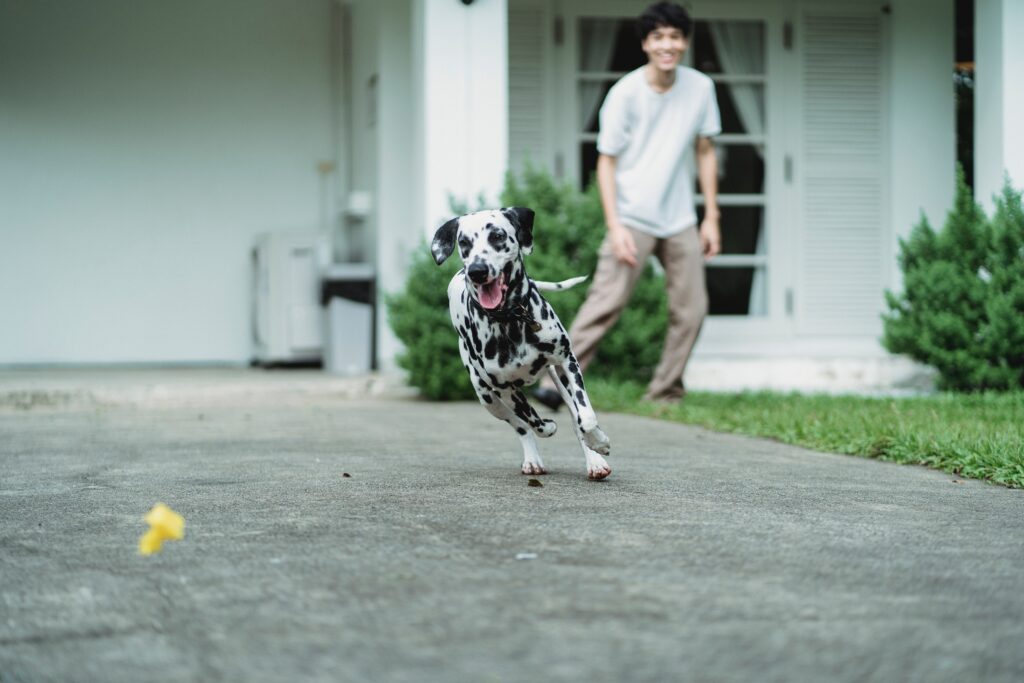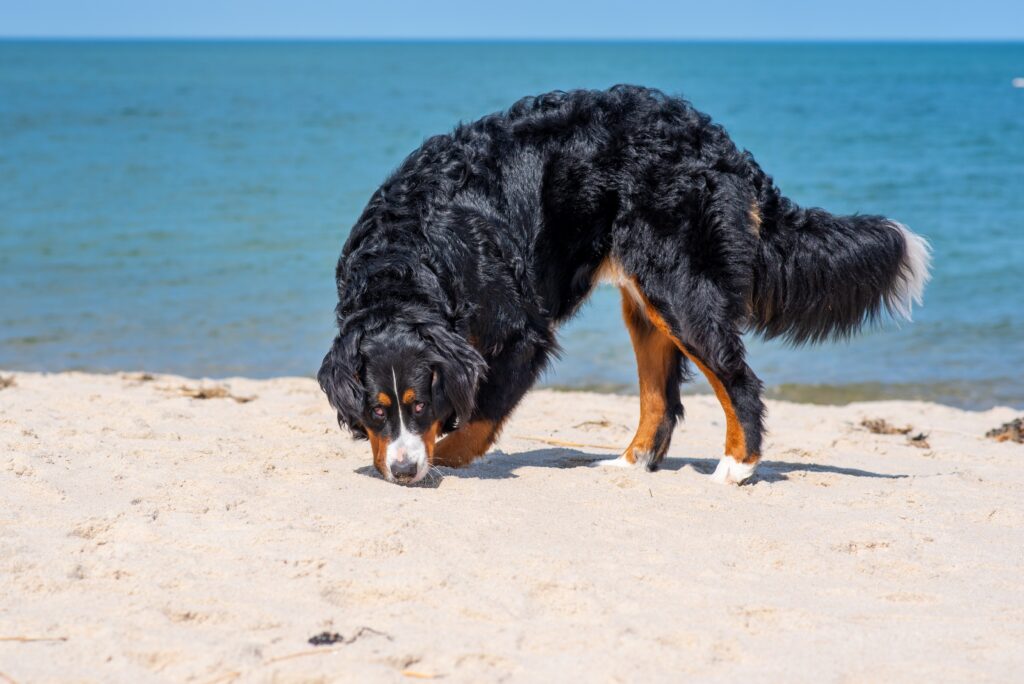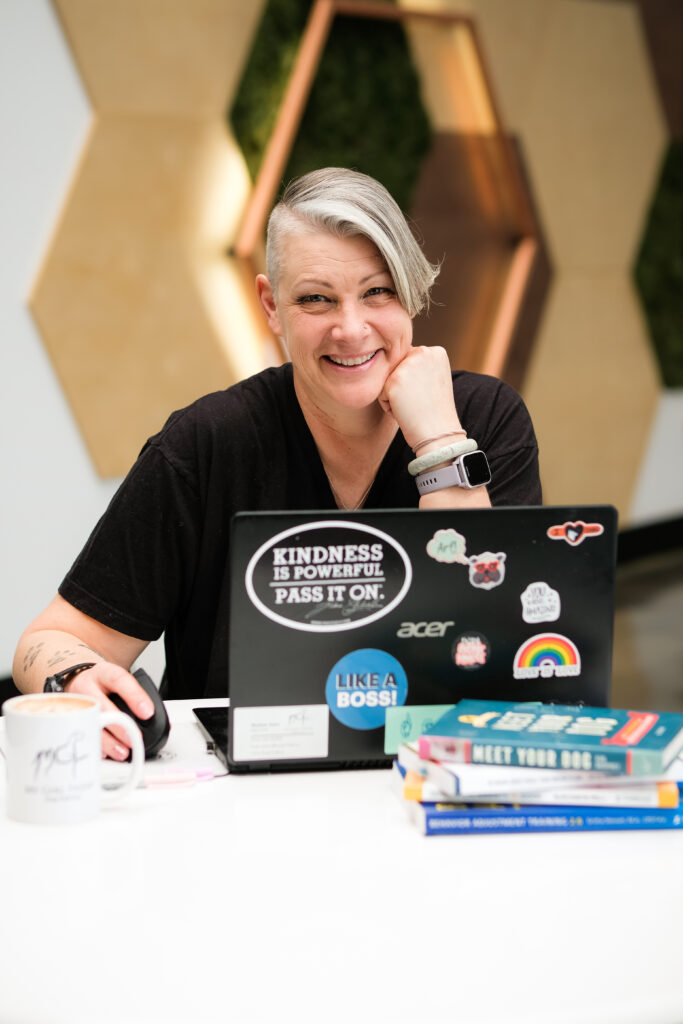“My dog chews on everything!”
“My dog just wants to go and sniff when we’re walking! Why can’t he just heel?!”
“My dog seems to never get tired!”
If any of those sound familiar, it could be because your dog needs something that isn’t currently in their lives. Dogs are more than just four legged beings that live in our home. They are sentient beings that have very similar needs to us! In my previous article “Why Walks Are So Important…Or Are They??” we discussed the “Hierarchy of Dog Needs” and as responsible dog caregivers, it is crucial for us to understand and fulfill these needs. One way that we can address each of their needs (biological, emotional, social, force-free training / learning and cognitive) is through what is referred to as “enrichment”.
It’s become a bit of a buzz word; however, most people don’t know what it truly means and why it’s so important for their dogs to have opportunities for enrichment. In essence, enrichment is “the action of improving or enhancing the quality or value of something” (Oxford languages) and when it comes to our dogs, there is a long list of reasons why it’s imperative for their wellbeing. Here are a few, with the category from the Hierarchy of Dog Needs in brackets.
Mental Stimulation (Emotional, Social, Force-Free Training / Learning, and Cognitive)
Just like humans, dogs have an innate need to learn, explore, and solve problems. Without sufficient mental stimulation, dogs may become bored, frustrated, and even develop behavioral issues. By engaging their minds through interactive toys, puzzles, positively reinforced training sessions, and novel experiences, we keep their brains active and may prevent boredom and its associated problems (chewing, boundless energy, etc.).
Physical Exercise (Biological, Social, Force-Free Training / Learning and Cognitive)
Enriching activities, such as playing fetch, going for walks in new environments, participating in agility or breed group specific activities like scent work or dock diving, not only provide physical exercise but also stimulate the mind. Combining physical and mental exercise through enrichment promotes a healthy balance and helps to prevent the development of behavioral problems caused by pent-up energy.
Emotional Well-being (Emotional, Social, Force-Training / Learning and Cognitive)
Dogs are social animals and thrive on companionship and connection with humans and other animals. Lack of emotional connection can lead to loneliness, anxiety, and all kinds of behaviours that are not healthy for the dog and are generally undesirable from the human perspective. Enrichment activities, such as playdates with other dogs, snuggle time on the couch or playing with their caregiver, games and training, all provide opportunities for socialization and emotional fulfillment.
Problem Solving (Force-Free Training, Cognitive)
Enrichment activities challenge dogs to think, problem-solve, and learn new skills. Interactive toys and puzzles require dogs to use their brain and problem-solving abilities to access rewards. Not only is this exhausting but it helps to build a dog’s confidence. A confident dog is capable of adjusting their behavior based on the environment they find themselves in, handle new situations with greater ease, and have a lower likelihood of developing fear or anxiety related behaviours.
Bonding and Relationship Building (Biological, Emotional, Social, Cognitive)
A strong bond between canine and human is the foundation for everything else that we are going to ask from our dogs so building that emotional connection is key. By providing for their needs, we are creating an environment where the dog can feel safe, thereby building the secure base from which the relationship grows. Engaging in playtime, training, or exploring new environments together, is a great way to build and maintain that bond.
Now that we know WHY enrichment is so important, let’s figure out HOW to provide it to our dogs. Here are just a handful of ideas to get you started.

- Feed one of their daily meals in a puzzle ball or snuffle mat.
- Create a scavenger hunt in your backyard using some treats, their food, their favourite toy, etc. If you don’t have a backyard, you can do it inside your home too!
- Take a long, leisurely walk through a forest trail and let your dog sniff to their heart’s content.
- Give your pup a soothing massage.
- Play with your dog! Invite them to play and then actively participate in game. Gentle tug of war, fetch if they like that, hide and seek (of you, toys, treats, etc.)
- Let your dog just hang out and watch (and smell) the world around them. Head to a local park and just sit. Sit on your front porch or lawn and just be together.
- Training sessions that use positive reinforcement are awesome for enrichment! You can teach your dog new cues or tricks, as long as the sessions are short and fun for both of you.
- Arrange playdates with other dogs that are similar in play style and energy as your dog.
One thing to remember is that different breeds have been bred to perform different jobs. Try to find something that will tap into their natural instincts. For example, have a treat ball for a Herding breed so they can roll it around and get the mental and physical stimulation they need. For a Guardian breed, going to a park, especially one that has a nice big hill that you can sit atop will allow your dog to just observe the environment from up on high. For a dog in the Gun Dog breed group, a nice long hike through the forest where they can scent all the critters that have crossed the path is completely enriching.
Remember, as important as enrichment is, it really doesn’t have to be difficult, costly or involve Herculean efforts to provide it for your dog! Finding new, creative, different and fun ways to keep your dog thinking, moving, observing, learning, playing and bonding is the perfect way to live a long, happy and fulfilled life with your four-legged companion!

Article by Mariana Jones
Based in Waterloo, Ontario, Canada, Mariana Jones (MJ to all that know her) was the first Family Dog Mediator® in Ontario! One thing, that as an FDM® she is very passionate about, is bridging the gap between what our dogs need and what we, as their caregivers, want.
The goal for MJ and My Girl Friday (MGF) is to empower every dog and human to live together with understanding, kindness, compassion, empathy, trust and love. MJ helps humans to understand WHY a behaviour may be happening, based on the L.E.G.S® (Learning, Environment, Genetics and Self) of the dog. Once we know WHY the behaviour is happening, we can figure out HOW to help the dog and what we need to teach them so they can thrive in our human world.
MJ currently shares her life with her two children (Victor and Bella), three dogs (Happy, Joy and Maximum) and two cats (Monster and Magic). Every dog in her life teaches, inspires and brings joy to her every single day!
Website: My-girl-friday.ca
Facebook: My Girl Friday – Dog Training
Instagram: mjatmgf





